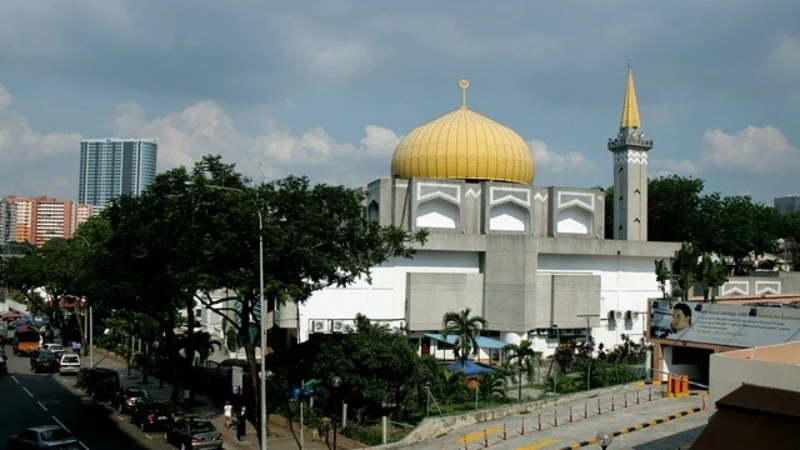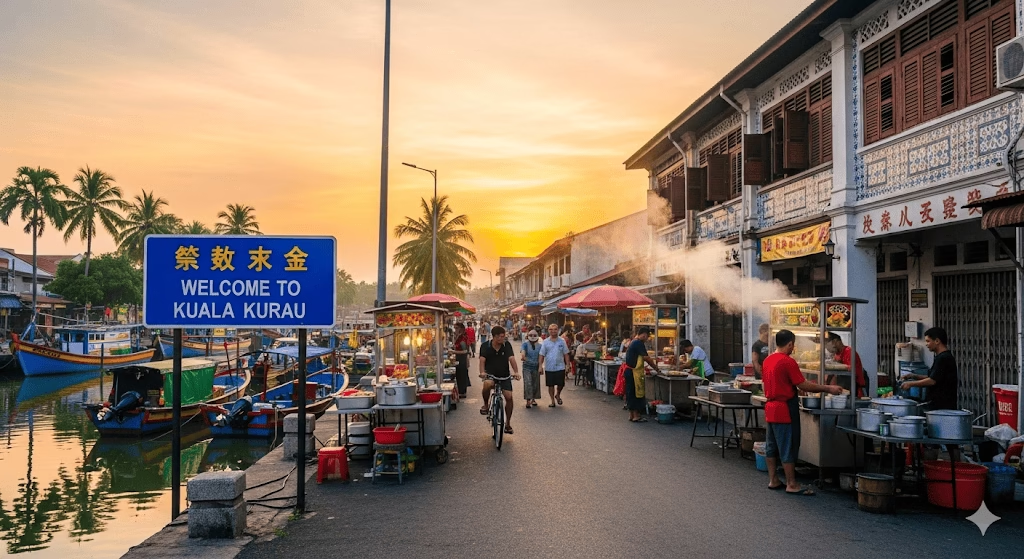Masjid Saidina Abu Bakar As-Siddiq Bangsar- A Modern Classic in Malaysia’s Islamic Architecture

Introduction
Masjid Saidina Abu Bakar As-Siddiq in Bangsar, Kuala Lumpur, stands as a striking symbol of Malaysia’s modern Islamic architectural identity. Completed in 1982, this mosque is one of the earliest postmodern mosques in the country, merging traditional Mughal and Arabian influences with contemporary Malaysian design elements.
Beyond serving as a place of worship, the mosque represents the evolution of Islamic architecture in Malaysia — a bridge between historical forms and modern functionality.
History and Background
The vision to establish a mosque in Bangsar began in 1976, initiated by a community of around 3,500 local Muslim residents. Their proposal was supported by the Islamic Affairs Department of Malaysia (JAKIM), which agreed to co-fund the construction — contributing 70 percent of the total cost, alongside public and overseas donations.
The Ministry of Federal Territories acted as the project client, and the architectural responsibility was entrusted to Dato’ Ar. Hj Hajeedar bin Hj Abdul Majid, one of Malaysia’s most influential architects in modern Islamic design.
The architect collaborated closely with Tan Sri Dato’ Sheikh Abdul Mohsein bin Hj Salleh, the first Mufti of the Kuala Lumpur Federal Territory, to create a mosque model that could serve as a template for future mosque designs in Malaysia.
Construction began in 1978 and was completed in 1982. The mosque was inaugurated by His Majesty Sultan Haji Ahmad Shah Al-Musta’in Billah, the seventh Yang di-Pertuan Agong of Malaysia.
Architectural Design and Features
Masjid Saidina Abu Bakar As-Siddiq embodies a blend of traditional Islamic motifs and modern architectural forms. The mosque’s three-storey structure, made of reinforced concrete, is crowned by a magnificent gold dome that dominates the skyline of Bangsar.
Key Architectural Highlights:
- Pan-Islamic Design: The mosque integrates Mughal, Arabian, and Malay influences, reflecting Malaysia’s diverse Islamic heritage.
- Gold Dome and Minaret: The large dome and freestanding umbrella-inspired minaret were inspired by Masjid Negara (National Mosque), symbolizing spiritual enlightenment.
- Square Prayer Hall: Modeled after Mughal architecture, the main prayer hall is designed for maximum spatial efficiency, with an overspill area for large gatherings.
- Interior Elements: The stained-glass windows, sliding screen doors, and open ventilation ensure natural lighting and airflow throughout the building.
- Functional Spaces: The mosque houses a female prayer gallery, classrooms, library, offices, and ablution facilities, serving both religious and educational purposes.
- Artistic Details: Inside the prayer hall, the mihrab and minbar are adorned with intricate carvings, while large wooden Quranic tablets grace the qibla wall, symbolizing faith and knowledge.
International Influence
Masjid Saidina Abu Bakar As-Siddiq’s architectural brilliance gained global recognition when its design inspired the Al-Sultan Muhammad Thakurufaanu Al Auzam Mosque (Islamic Centre) in Malé, Maldives. The Maldivian government found the design to be both climatically suitable and culturally resonant, underscoring Malaysia’s influence in shaping Islamic architecture in Southeast Asia.
Visiting Masjid Saidina Abu Bakar As-Siddiq
Location: Jalan Ara, Bangsar, Kuala Lumpur, Malaysia
Public Transport Access:
- LRT Bangsar Station – approximately 5 minutes by car or Grab
- KTM Mid Valley Station – around 10 minutes by taxi
Facilities Available:
- Main and women’s prayer halls
- Ablution areas
- Library and classrooms
- Community event spaces
- On-site parking
Visitor Etiquette:
Visitors are welcome to explore the mosque outside of prayer times. Modest clothing and respectful behavior are required within the mosque premises.
Frequently Asked Questions (FAQ)
1. When was Masjid Saidina Abu Bakar As-Siddiq built?
Construction began in 1978 and was completed in 1982.
2. Who designed the mosque?
It was designed by Dato’ Ar. Hj Hajeedar bin Hj Abdul Majid, a renowned Malaysian architect known for modern Islamic structures.
3. What architectural style does the mosque feature?
The mosque blends Mughal, Arabian, and Malay modernist elements, representing Malaysia’s postmodern Islamic architectural style.
4. Is Masjid Saidina Abu Bakar As-Siddiq open to tourists?
Yes, non-Muslim visitors may enter outside prayer times, provided they follow mosque etiquette and dress modestly.
5. What makes this mosque unique?
It was a prototype design for Malaysia’s modern mosque architecture in the 1980s and inspired mosque designs in other Muslim countries like the Maldives.
Conclusion
Masjid Saidina Abu Bakar As-Siddiq in Bangsar stands as a timeless masterpiece that fuses faith, culture, and design innovation. Beyond its religious significance, the mosque serves as a beacon of architectural excellence, inspiring structures across the Islamic world.
For anyone exploring Kuala Lumpur, visiting this mosque offers not only a serene spiritual experience but also an insight into Malaysia’s architectural ingenuity and Islamic heritage.















Comments are closed.